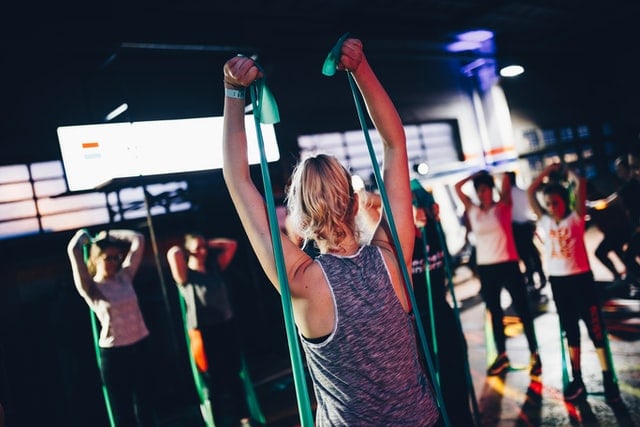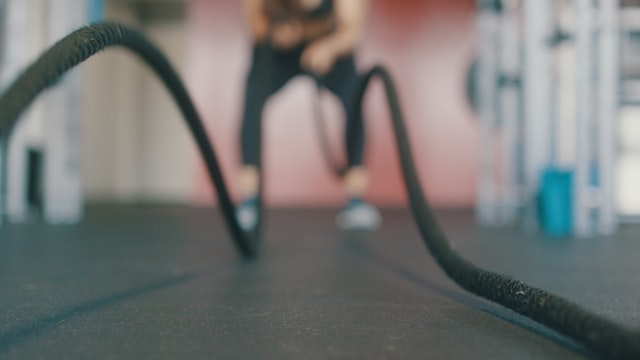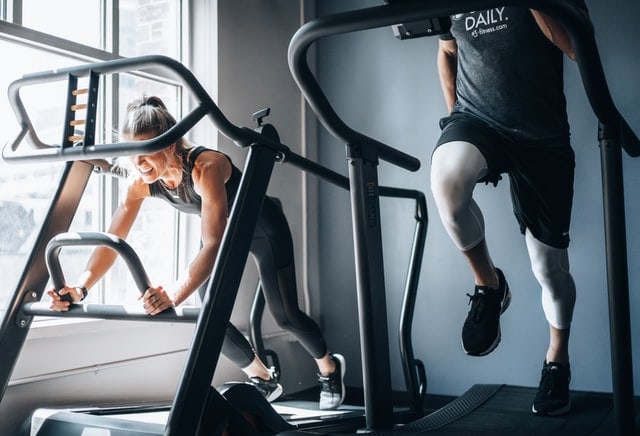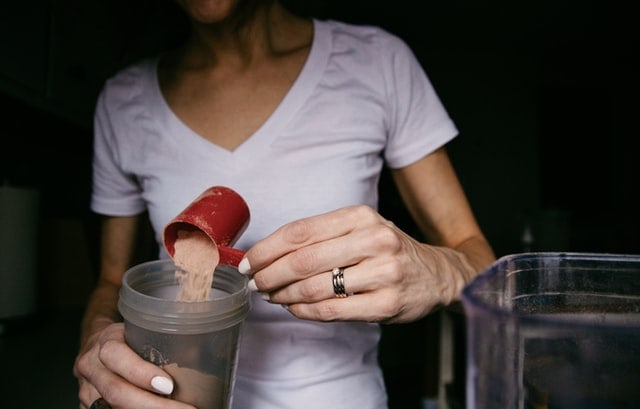Interval training (or High-Intensity Interval Training, also known as HIIT) has swept the nation. HIIT workouts have a lot of benefits, from aiding in weight management to helping us jump-start our passions, sometimes literally. If you haven’t jumped onto bandwagon yet, there’s still plenty of time to get started.
In 15 minutes of a highly intensive interval training workout than you could by jogging for an hour. For those of us with busy lifestyles, the time crunch can be a huge factor in our fitness habits. Interval training works with the average person who has little to no free time. And it can impact your weight loss plans as an early morning workout can boost your metabolism for hours afterwards.
When HIIT is performed correctly, it can challenge you and your body to reach new levels of fitness.

Interval Training Motivation: how to stay on track to meet your goals
If you’ve been trying to get healthy but remain unmotivated no matter what fad you try, take a little time out for yourself and think about why your exercise style just… isn’t doing it for you. This is the perfect time to switch your workouts!
One of the great things about HIIT workouts is that you can direct them to achieve any type of goal (from weight loss to cardio to bodybuilding) and complete them using a huge variety of methods.
You can do HIIT workouts on a treadmill at home, at the gym with a class or in the park on your lunch break.
HIIT can be an incredible tool to help you lose weight, regain confidence and even boost your mood. There are some serious benefits to getting on top of your lifestyle, especially your workouts! Boost your energy and your strength with an exhilarating interval training workout that will keep you on your toes!
When it comes to health and fitness, every aspect of your life can make a difference.
High-intensity interval training might just be the boost you need to take the next step and stick to a new, healthier lifestyle for good. Talk to your trainer about HIIT during your next session or find a PT or exercise physiologist on Avaana to find out whether HIIT is right for you!
What is an HIIT workout or interval training?
High intensity interval training is a workout designed around short bursts of very high activity, with short intervals for recovery and low intensity exercises. A HIIT workout is usually 10-30 minutes long which is why it is becoming very popular for those who don’t have the time for a longer workout.

You can do an HIIT workout on a run, with a cycle or stationary bike, with workout equipment at the gym, or at home with body weight exercises.
The benefits of doing an HIIT workout
Starting a high-intensity interval training workout can offer you many benefits, from building strength to helping you lose weight.
You’ll get shredded: With a HIIT workout, even a short session will help burn calories. It creates muscle definition as you lose fat, especially for those who are just beginning. HIIT workouts are great for dropping a few inches from your waistband and giving you a more toned appearance.
You’ll be stronger: If you do a HIIT workout with body weight or gym equipment, you’ll find that frequently used muscles like the core, chest, arms, and glutes will become stronger. This means you’re less likely to experience back pain, stiff neck or shoulders or hip pain caused by weak muscle structure.
You’ll get healthy: Sticking to a regular HIIT workout is the best thing you can do for your health when you don’t have a lot of time. It is very helpful for losing visceral fat, the fat that gathers around your organs and causes health problems. It keeps your metabolism high all day so that your body burns calories even after your workout is over. As with any exercise, you’ll also experience more controlled blood pressure, heart rate and blood sugar.

Try interval training at home
If you’re planning on starting an HIIT workout schedule, do note that there are some precautions to take:
Some exercises like burpees may not be advisable for people with certain health conditions. If you are pregnant, have blood pressure, vertigo, asthma, cardiac problems, or have any kind of chronic back or muscle pains, do check with your doctor before starting a new exercise regimen.
A HIIT workout can be quite intense and exhausting. If you’re just starting, aim for short workouts so you can level up slowly.
It is very important that you warm up adequately before a workout and cool down/stretch afterwards. If you’re doing a HIIT workout at home using YouTube, the instructor may have a separate video for warm-ups and cool-downs. Check before you begin so you can queue a list of videos to work out.
Here are some suggestions to try HIIT workouts wherever you like to exercise:
If you like running, cycling or swimming, plan to go as fast as you can for 20 seconds and immediately slow down for 15 seconds. As you get better at this, you can move up to longer durations of fast exercise.
If you prefer bodyweight exercises, there are plenty of YouTube channels with great workouts for all kinds of schedules. Whether you have 10 minutes or 60 minutes to spare, you’ll find something there.
If you are already a member of a gym, talk to your floor trainer or hire a personal training expert to design a custom HIIT workout for yourself.
Plan your diet to get the most out of your HIIT workout
HIIT workouts can have a huge impact on your lifestyle and change the way you feel about yourself, but it’s essential to pair your daily fitness routine with other healthy habits. The biggest benefit will come from your diet because it fuels your body and allows it to perform all those intense workouts.
A balanced HIIT diet designed by a nutritionist or dietitian will go a long way in ramping up your interval training sessions. It also helps your body repair itself afterwards, so you won’t be sore in the morning!
AU Sport claims that “muscle and body protein metabolism is a constant balance between protein breakdown and protein rebuilding. During exercise the balance shifts towards protein breakdown, while during the recovery period after exercise the balance tips in the opposite direction.”
In addition, a good workout can speed up your metabolism for up to 24 hours afterwards! Fuel yourself with healthy, organic foods, and you’ll be amazed at how much your body will thank you.

Try adding superfoods to your diet to make the most of everything you eat. A superfood is a natural ingredient that is packed with more minerals, vitamins, and antioxidants than you’d usually find in an ingredient of that type.
You don’t have to completely avoid carbs to maintain a healthy diet. Good carbs are beneficial to your body and can keep you feeling full for longer. By including legumes, whole grains and good carbs in your diet, you can build a high-fibre diet that leaves you feeling satisfied and full.
Making HIIT work for you
Any workout routine should be something you look forward to or enjoy. If you don’t like the regimen you’ve created, it will feel like a chore or a punishment and you’ll find excuses to avoid it. Do be aware that if your work and home life are stressing you out to the point of binge-eating and spending late nights on Netflix, any workout routine will be hard to maintain.
Set aside a regular time for your exercise, whether it is 10 minutes or 30 minutes and make sure you devote this time to yourself. Turn off your phone and focus on the exercise and the feeling of giving yourself some time to improve your health.

It helps to have a specific place and clothing for your workout. If you have the space, a spare room or a garden are great places to do your workout. If not, clear space in a bedroom or any room where you will not be interrupted by other members of the family. Changing into workout clothing helps keep you motivated but more importantly, provides the support you need for an HIIT workout.
After you work out, you should eat a protein-rich meal so your metabolism keeps going. Make sure you drink plenty of water to rehydrate yourself after an intense workout.
What form of HIIT is right for me?
HIIT is not for the faint of heart and you’ll need energy to keep up with the intensity of the workout. That being said, there are different levels of HIIT workouts and finding a session tailored to beginners is a good place to start so as not to get overwhelmed.

There are some exercises that are better suited for certain body types. The most effective way to meet your fitness goals is to find an exercise that suits you. Here’s a quick guide:
Are you an endomorph?
Body type: Usually strong and muscular with a tendency to put on weight. May have chubby face and limbs, with high body fat percentage.
Typical health challenges: Gains weight easily, struggles to lose weight, muscle definition takes time to show
Best workout: Workouts that burn large number of calories, cardio exercise combined with some strength training
Are you an ectomorph?
Body type: Thin, narrow body with bony ankles and wrists. Tends to have low muscle mass and a ‘ruler straight’ body.
Typical health challenges: Cannot gain weight easily, struggles to put on muscle.
Best workout: Weight training to build strength and muscle mass, cardio for warming up and to improve heart rate
Are you a mesomorph?
Body type: Mix of ectomorph and endomorph. Usually has moderate muscle definition, remains at an average weight, body responds fast to exercise.
Typical health challenges: Has to work out to maintain healthy body weight or increase muscle definition. May gain weight as they age.
Best workout: Mix of cardio to improve heart rate, with weight training to maintain muscle tone and strength.
If you need help designing an HIIT workout that is right for you, talk to a personal trainer.



